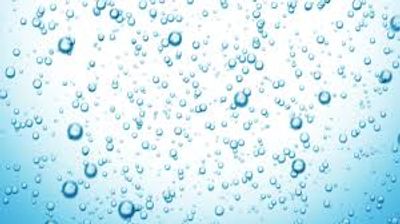NANO BUBBLE TECHNOLOGY

What are Ultrafine or Nano Bubbles?
Bubbles contained in a liquid are visible to the eyes when the bubble sizes are large enough to see, as we can see bubbles in carbonated drinks or those coming from the air diffuser in a water tank.
Bubbles in diameter smaller than the wavelength of light are called ultrafine or nano bubbles, and they are too small to see. Ultrafine bubbles have many other remarkable features that ordinary bubbles do not possess. These bubbles can stay in a liquid for a long time, and are electrically charged, and are extra highly pressured as well. These special features of ultrafine bubbles have attracted attention from many industries including agriculture, aquaculture and food.
Bubbles are categorized into three levels of bubbles by size:
Normal Bubbles
Visible to the eye
Micro-Bubbles
Visible to eye as a dense milky solution, Size > 50 micron, Visible, Dense Micro Bubbles look milky.
Ultrafine Bubbles (Nano) - not visible to the eye
Size > 1 micron, invisible, exist for a long time in certain conditions. Look milky at outset and then become transparent and invisible to human eye. Ultrafine bubbles are air or gas filled microspheres suspended in a liquid carrier phase which generally results from the introduction of air or gas.
When compared to normal bubbles and micro bubbles, the ultrafine bubbles have a high cargo carrying capacity and so have an enormous transfer rate of gas to liquid. After generation, ultrafine bubbles show a prolonged presence (life) of up to six months (depending on conditions of site) due to the negatively charged surface and its high gas solubility. .
Characteristics of Ultrafine Bubbles
Rising Speed: Ordinary bubbles rise in the water rapidly and burst on the water surface. ultrafine bubbles, on the other hand, stay in water because they are so small in size and extremely slow to rise.
Self –Pressurizing Effect: An interface is a surface forming a common boundary among two different phases of matter; gas and liquid, liquid and liquid, liquid and solid, and solid and solid. Pressure is generated between the surfaces with surface tension. As the bubble size becomes smaller, the higher the inner pressure becomes due to surface tension. The bubbles are further compressed, which makes the inner pressure even higher. Logically, the pressurization process is infinite. Pressurization also promotes dissolution of gas into the water (Henry's Law).
Surface Potential Characteristics: Because ultrafine bubbles have a colloidal characteristic and are negatively charged, they repel each other. Ultrafine bubbles are not bonded to each other, and bubble density is not reduced.
Collapsing: Ultrafine bubbles are self-pressurized to burst, dissolving water and nitrogen, and generating sanitizing hydroxyl radicals.
Stability: Ultrafine bubbles have been confirmed to stay in a liquid for over six months.
Transparency: Nano-size bubbles do not scatter visible light, making the water solution look transparent
How are Nano Micro Bubbles Produced?
Water and air or gas are introduced into a high-pressure pump and sent to the static mixer where the air is shattered and broken into small bubbles by turbulent motion under high pressure creating micro bubbles.
The Ultrafine Bubbles are made from Micro Bubbles by breaking them with mechanical force or self-broken due to their extremely high inner pressure to become ultrafine bubbles. They are basically excess (non-dissolved) air in the water.
NANO or ULTRA FINE BUBBLES
Earthwise Global
Copyright © 2025 Earthwise Global - All Rights Reserved.
Powered by GoDaddy Website Builder